Force Spectrums
Select “Force Spectrum” through Layout window > Misc. The Force spectrum list appears.
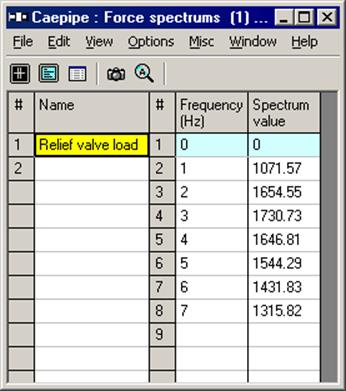
Enter a name for the force spectrum and spectrum values versus frequencies table. In addition to inputting the force spectrum directly, it can also be read from a text file or converted from a previously defined time function.
To read a force spectrum from a text file:
use the List menu: File > Read force spectrum.
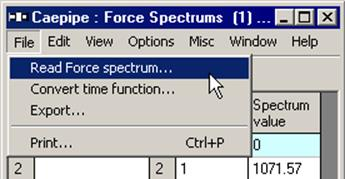
The text file should be in the following format:
Name (up to 31 characters)
Frequency (Hz) Spectrum value
Frequency (Hz) Spectrum value
Frequency (Hz) Spectrum value
. .
. .
. .
The frequencies can be in any order. They will be sorted in ascending order after reading from the file.
To convert a previously defined time function to force spectrum:
use the List menu: File > Convert time function.
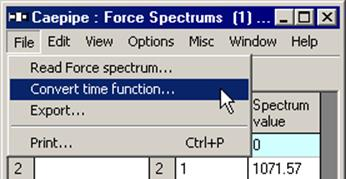
The Convert Time Function dialog appears.
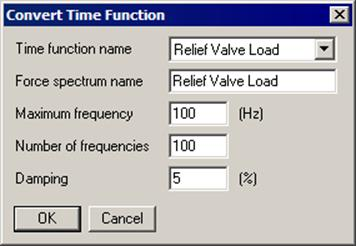
Select the time function to convert from the Time function name drop down combo box. Then input the Force spectrum name (defaults to the Time function name), Maximum frequency, Number of frequencies and the Damping. When you press Enter or click on OK, the time function will be converted to a force spectrum and entered into the force spectrum list.
The time function is converted to a force spectrum by solving the dynamic equation of motion for a damped single spring mass system with the time function as a forcing function at each frequency using Duhamel’s integral and dividing the absolute maximum dynamic displacement by the static displacement.
Force Spectrum Load
The force spectrum loads are applied at nodes (in Data column in Layout window). At least one force spectrum must be defined before a force spectrum load at a node can be input.
To apply the force spectrum load at a node click on the Data heading or press Ctrl+Shift+D for Data Types dialog.
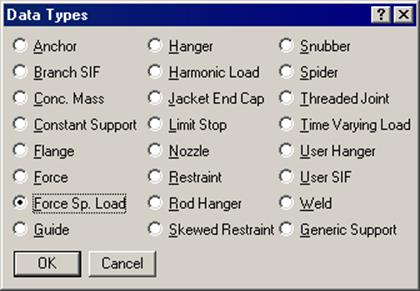
Select “Force Sp. Load” as the data type and click on OK. This opens the Force Spectrum Load dialog.
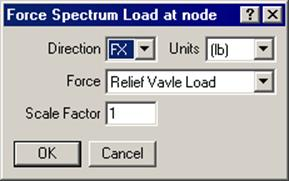
Select the direction, units and force spectrum using the drop down combo boxes and input appropriate scale factor. The scale factor can be a scalar value, which, when multiplied by the non-dimensional force spectrum, will give the actual magnitudes of the force versus frequency in the global direction and unit selected in the above dialog. Then click on OK to enter the force spectrum load at that node.

Input force spectrum loads at other nodes similarly. Then select the force spectrum load case for analysis using the Layout menu: Loads > Load cases.
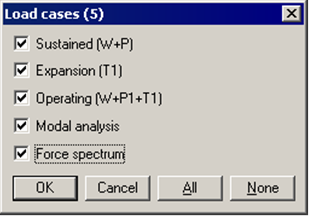
Note that Modal analysis and Sustained (W+P) load cases are automatically selected when you select Force spectrum load case. The force spectrum load case is analyzed as an Occasional load.
For more details, see topic on Force Spectrum in the Technical Reference Manual.